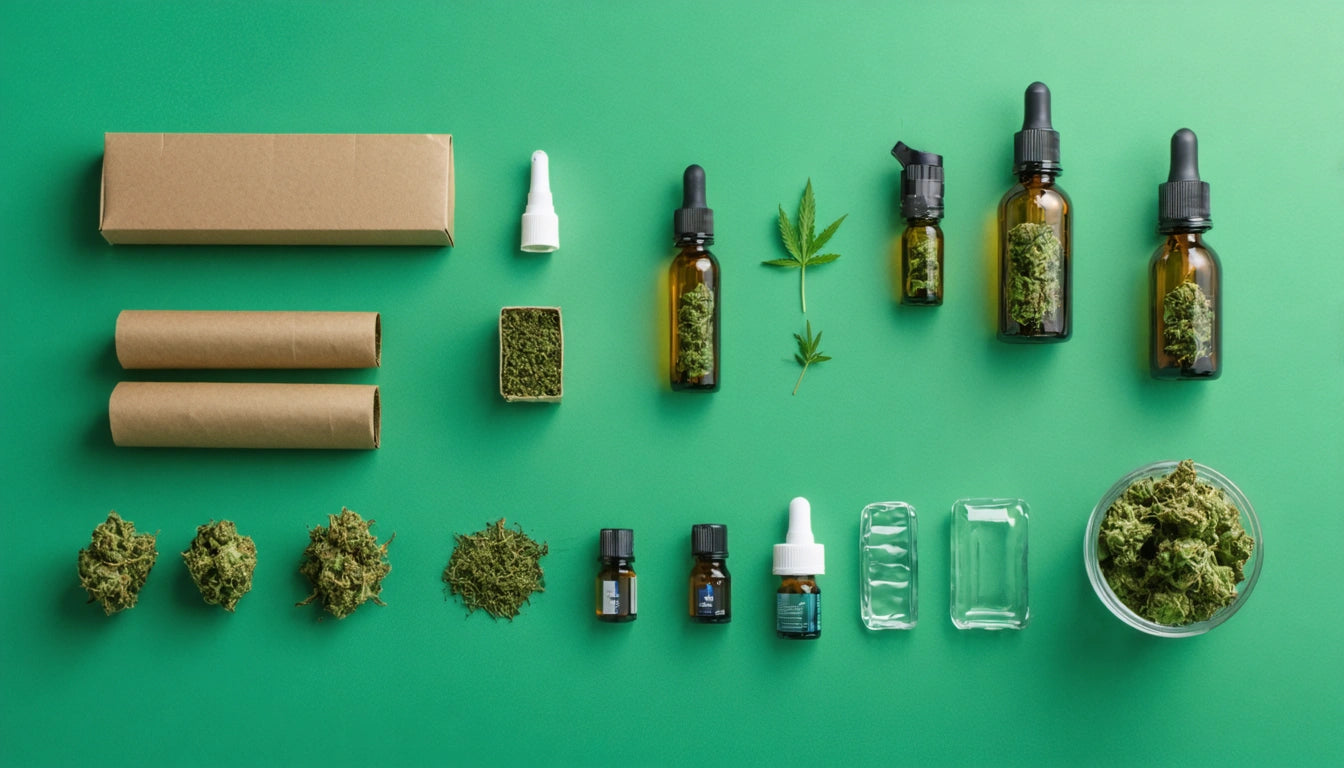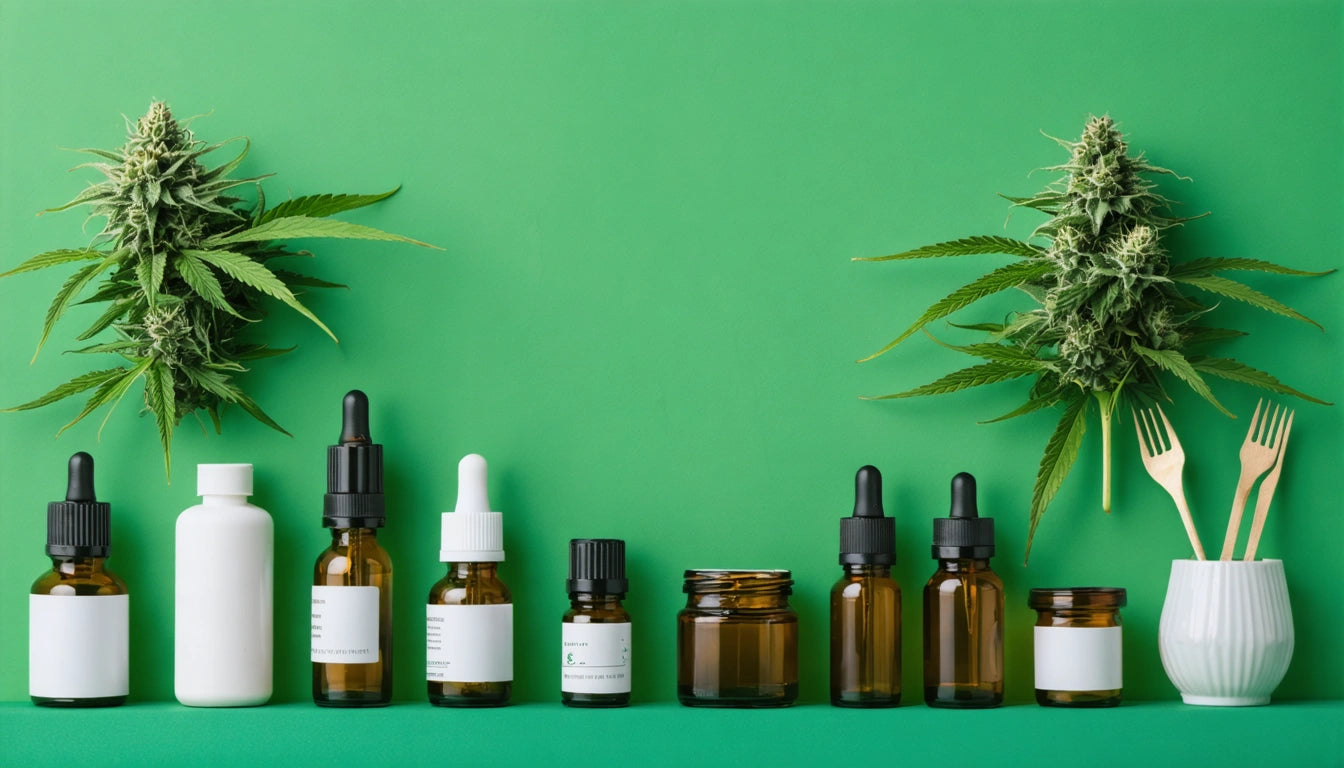Table of Contents
Proper storage of cannabis packaging materials is crucial for maintaining product integrity, ensuring compliance, and controlling operational costs. Damaged packaging can lead to product contamination, regulatory violations, and significant financial losses. This guide outlines best practices for storing various cannabis packaging components to maximize shelf life and minimize waste.
Storage Environment Fundamentals for Cannabis Packaging
The environment where packaging materials are stored directly impacts their longevity and functionality. Temperature, humidity, light exposure, and air quality all play critical roles in preserving packaging integrity.
Temperature Control
Most cannabis packaging materials require storage in temperature-controlled environments. According to recommended storage conditions, temperatures between 65-75 °F (18-24 °C) are ideal for most materials. Extreme temperatures can cause warping, brittleness, or degradation of child-resistant mechanisms.
Humidity Management
Humidity control is essential, particularly for paper-based packaging and labels. Relative humidity should be maintained between 40-60% to prevent moisture damage. High humidity can lead to mold growth, adhesive failure on labels, and compromised structural integrity of cardboard packaging.
Light Exposure
UV exposure accelerates degradation in many packaging materials, particularly plastics and colored components. Store light-sensitive materials in opaque containers or rooms with UV-filtering window treatments. This precaution helps maintain the integrity of child-resistant closures and jar lids that might otherwise become brittle or discolored with prolonged light exposure.
Material-Specific Storage Requirements
Different packaging materials demand specific storage conditions to maintain their protective properties and compliance features.
Glass Containers
Glass jars require careful handling and storage to prevent chips, cracks, or breakage. Store on stable shelving with dividers or in their original shipping containers. Avoid stacking heavy items on glass packaging to prevent pressure damage.
Plastic Packaging
Plastics are vulnerable to static electricity, which attracts dust and contaminants. Store in anti-static bags or containers and maintain moderate humidity to reduce static buildup. Keep away from heat sources that could cause warping or deformation.
Labels and Printed Materials
Adhesive labels and printed materials are particularly sensitive to environmental conditions. Store flat in sealed containers to prevent curling and moisture absorption. Rotate stock to ensure older materials are used first, preventing adhesive degradation over time.
Inventory Management Systems for Packaging Materials
Effective inventory management is crucial for maintaining packaging quality and operational efficiency. Implementing robust systems helps track materials and prevent damage from improper storage or handling.
Digital Tracking Solutions
Utilize inventory management software specifically designed for cannabis operations. As outlined in this guide on warehouse management systems, digital solutions help track expiration dates, monitor environmental conditions, and maintain appropriate stock levels.
FIFO Implementation
First-In-First-Out (FIFO) inventory management ensures older materials are used before newer stock, reducing the risk of degradation during extended storage. Clearly label all packaging with receipt dates and organize storage areas to facilitate FIFO protocols.
Handling Protocols to Minimize Damage
Proper handling procedures are essential for preventing damage during storage and retrieval of packaging materials.
Staff Training
Comprehensive training for all staff handling packaging materials is critical. Develop and implement standardized operating procedures for material handling, including proper lifting techniques, contamination prevention, and damage identification protocols.
Designated Handling Areas
Create designated clean zones for packaging material handling to minimize contamination risks. These areas should be separate from production spaces and equipped with appropriate tables, tools, and storage solutions designed to prevent damage during handling.
Seasonal Considerations for Packaging Storage
Seasonal variations in temperature, humidity, and production demands require adaptive storage strategies.
Climate Adjustments
Adjust environmental controls seasonally to maintain consistent storage conditions year-round. During summer months, enhance dehumidification and cooling systems. In winter, monitor heating systems to prevent excessive dryness that can affect paper-based packaging.
Demand Forecasting
Implement seasonal demand forecasting to optimize inventory levels and storage space. This reduces the risk of overcrowding storage areas during peak seasons, which can lead to improper stacking and subsequent damage.
Long-Term Storage Strategies for Operational Efficiency
Developing comprehensive long-term storage strategies helps cannabis businesses balance inventory needs with space constraints while maintaining material integrity.
Consider implementing a hybrid approach combining just-in-time inventory for frequently used items with strategic bulk purchasing for staple packaging components. According to this analysis of inventory approaches, balancing these methods can optimize both storage space and cost efficiency.
For multi-product operations, dedicated storage zones for different packaging types prevent cross-contamination and simplify retrieval. This organization system is particularly valuable when managing inventory for multiple product lines, allowing for efficient access while minimizing handling damage.
Finally, regular audits of stored materials help identify potential issues before they affect production. Schedule quarterly inspections of all packaging materials, checking for signs of degradation, compliance issues, or environmental damage. This proactive approach ensures that only quality packaging reaches your products, maintaining brand reputation and regulatory compliance.











Leave a comment
All comments are moderated before being published.
This site is protected by hCaptcha and the hCaptcha Privacy Policy and Terms of Service apply.